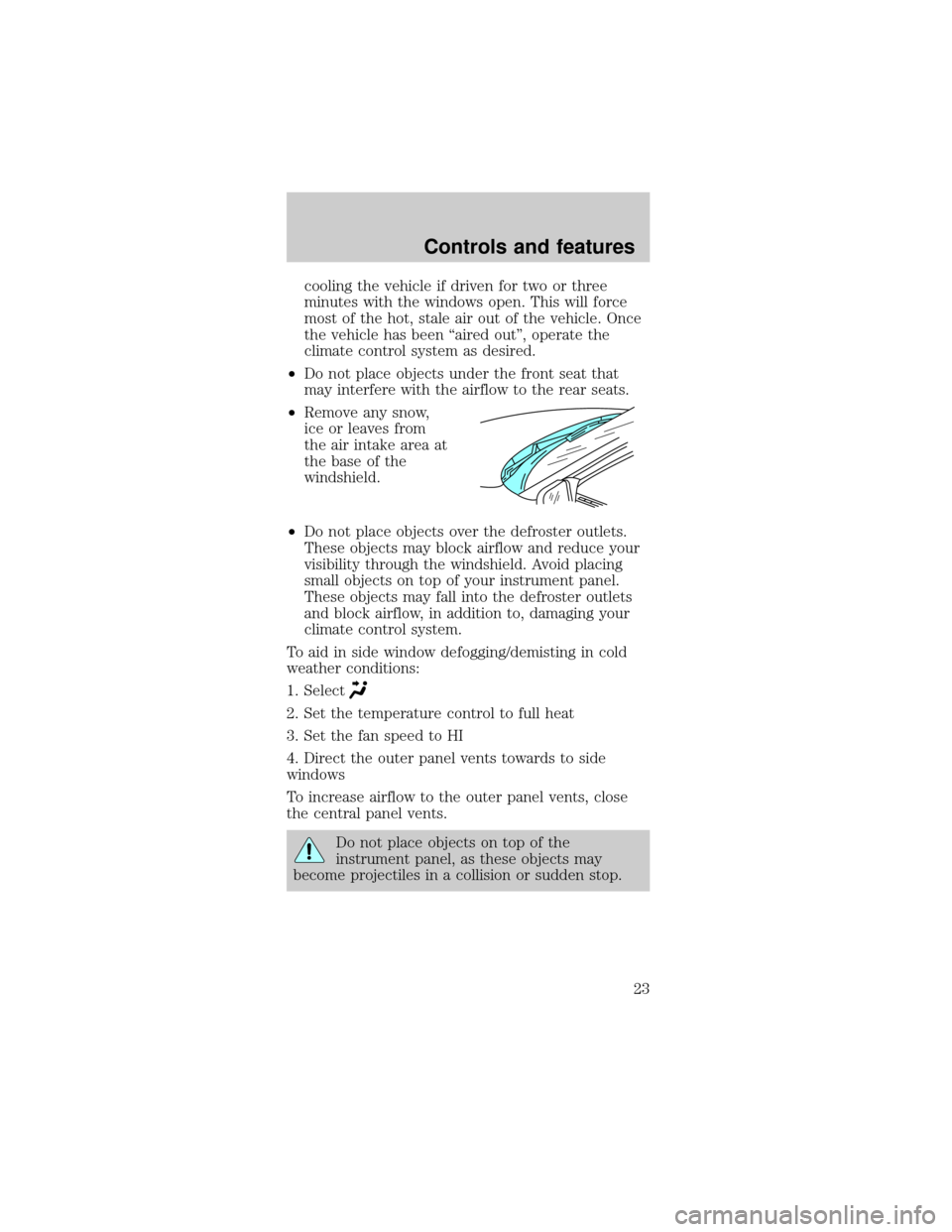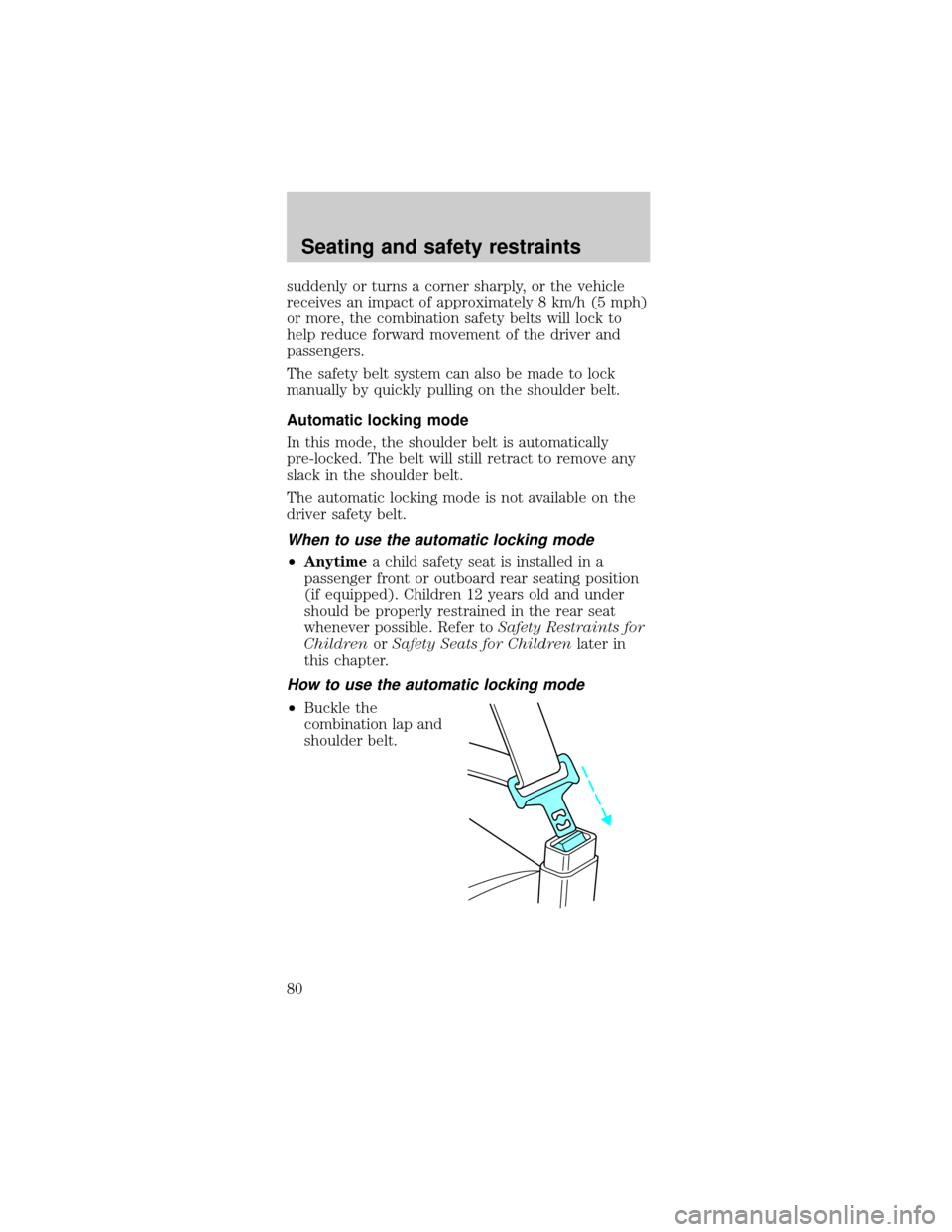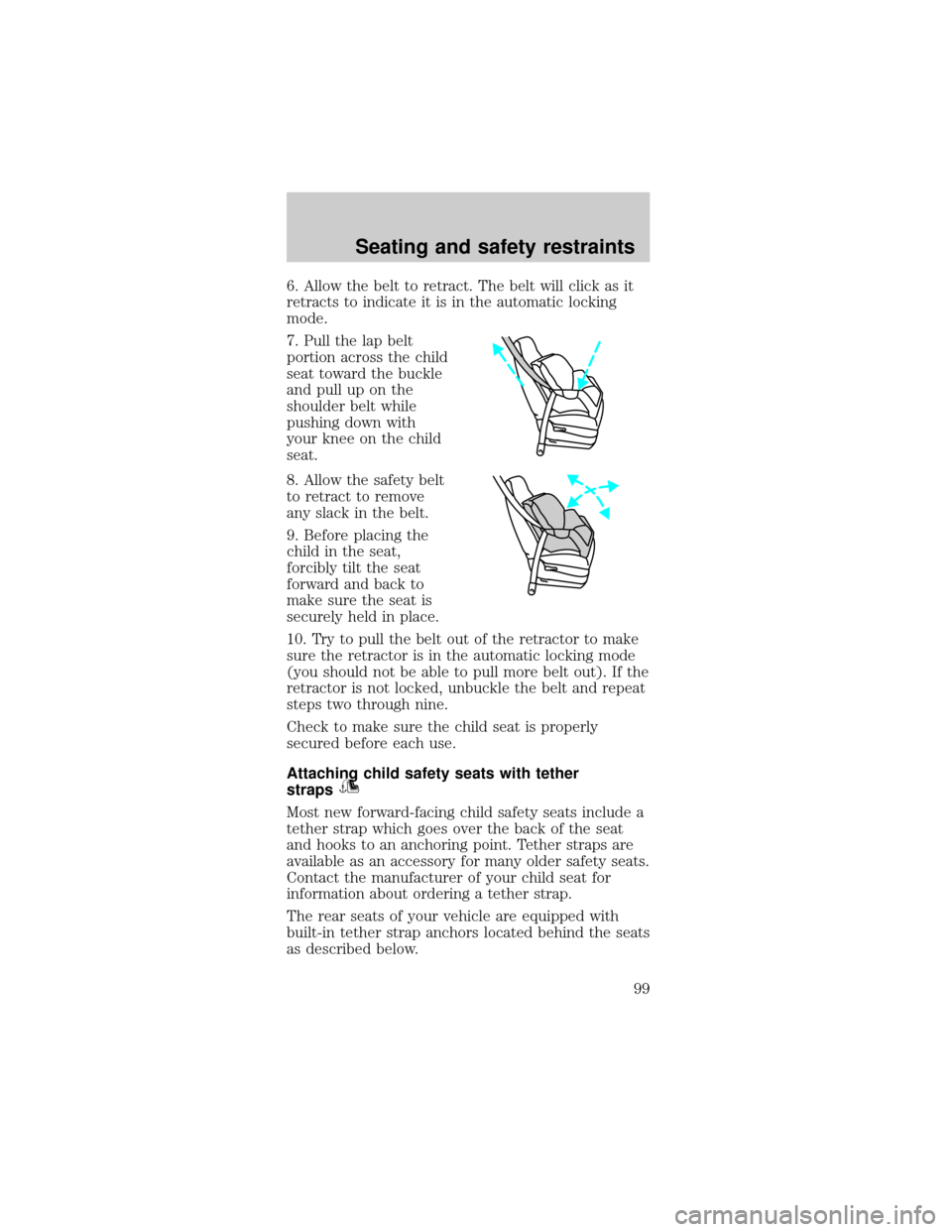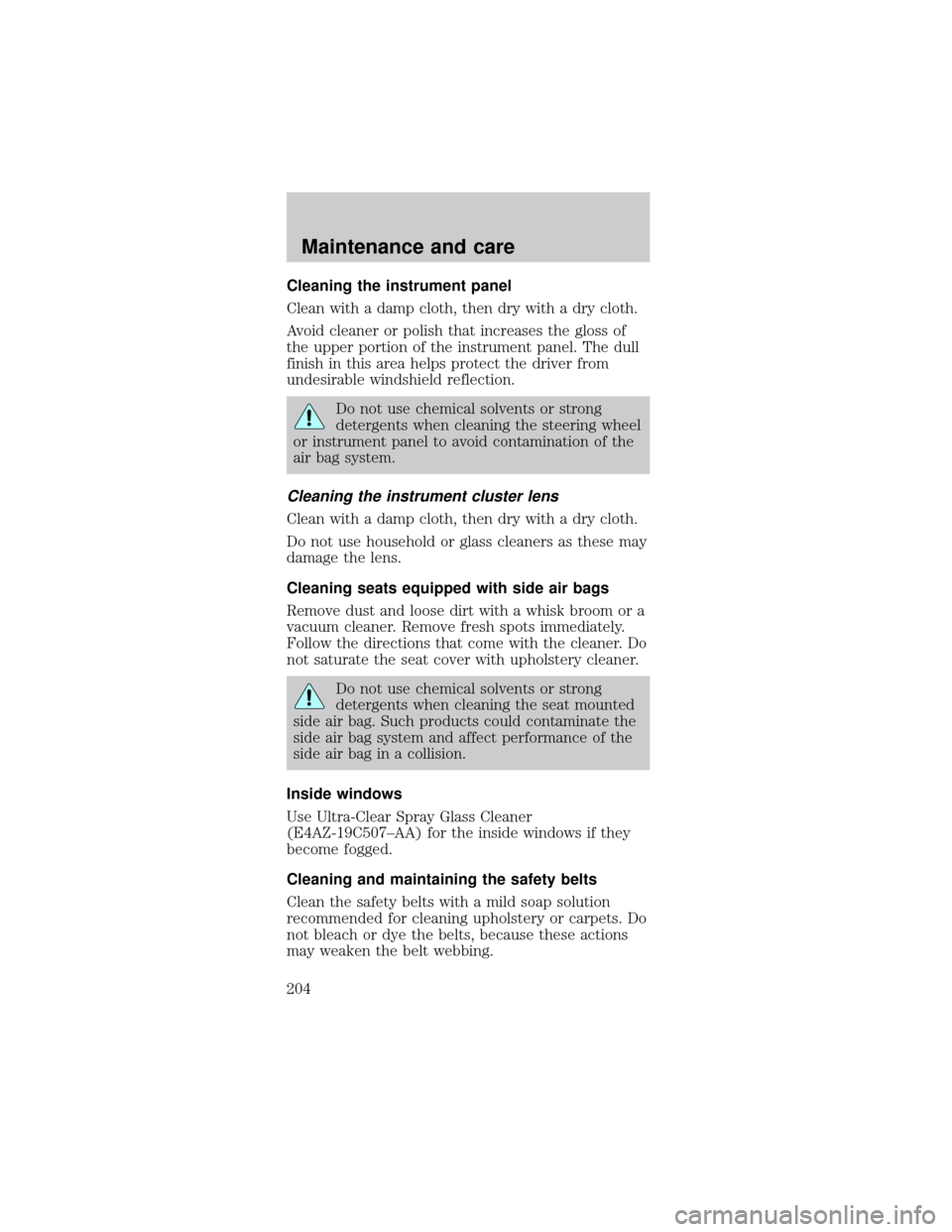Page 23 of 240

cooling the vehicle if driven for two or three
minutes with the windows open. This will force
most of the hot, stale air out of the vehicle. Once
the vehicle has been ªaired outº, operate the
climate control system as desired.
²Do not place objects under the front seat that
may interfere with the airflow to the rear seats.
²Remove any snow,
ice or leaves from
the air intake area at
the base of the
windshield.
²Do not place objects over the defroster outlets.
These objects may block airflow and reduce your
visibility through the windshield. Avoid placing
small objects on top of your instrument panel.
These objects may fall into the defroster outlets
and block airflow, in addition to, damaging your
climate control system.
To aid in side window defogging/demisting in cold
weather conditions:
1. Select
2. Set the temperature control to full heat
3. Set the fan speed to HI
4. Direct the outer panel vents towards to side
windows
To increase airflow to the outer panel vents, close
the central panel vents.
Do not place objects on top of the
instrument panel, as these objects may
become projectiles in a collision or sudden stop.
Controls and features
23
Page 80 of 240

suddenly or turns a corner sharply, or the vehicle
receives an impact of approximately 8 km/h (5 mph)
or more, the combination safety belts will lock to
help reduce forward movement of the driver and
passengers.
The safety belt system can also be made to lock
manually by quickly pulling on the shoulder belt.
Automatic locking mode
In this mode, the shoulder belt is automatically
pre-locked. The belt will still retract to remove any
slack in the shoulder belt.
The automatic locking mode is not available on the
driver safety belt.
When to use the automatic locking mode
²Anytimea child safety seat is installed in a
passenger front or outboard rear seating position
(if equipped). Children 12 years old and under
should be properly restrained in the rear seat
whenever possible. Refer toSafety Restraints for
ChildrenorSafety Seats for Childrenlater in
this chapter.
How to use the automatic locking mode
²Buckle the
combination lap and
shoulder belt.
Seating and safety restraints
80
Page 99 of 240

6. Allow the belt to retract. The belt will click as it
retracts to indicate it is in the automatic locking
mode.
7. Pull the lap belt
portion across the child
seat toward the buckle
and pull up on the
shoulder belt while
pushing down with
your knee on the child
seat.
8. Allow the safety belt
to retract to remove
any slack in the belt.
9. Before placing the
child in the seat,
forcibly tilt the seat
forward and back to
make sure the seat is
securely held in place.
10. Try to pull the belt out of the retractor to make
sure the retractor is in the automatic locking mode
(you should not be able to pull more belt out). If the
retractor is not locked, unbuckle the belt and repeat
steps two through nine.
Check to make sure the child seat is properly
secured before each use.
Attaching child safety seats with tether
straps
Most new forward-facing child safety seats include a
tether strap which goes over the back of the seat
and hooks to an anchoring point. Tether straps are
available as an accessory for many older safety seats.
Contact the manufacturer of your child seat for
information about ordering a tether strap.
The rear seats of your vehicle are equipped with
built-in tether strap anchors located behind the seats
as described below.
Seating and safety restraints
99
Page 204 of 240

Cleaning the instrument panel
Clean with a damp cloth, then dry with a dry cloth.
Avoid cleaner or polish that increases the gloss of
the upper portion of the instrument panel. The dull
finish in this area helps protect the driver from
undesirable windshield reflection.
Do not use chemical solvents or strong
detergents when cleaning the steering wheel
or instrument panel to avoid contamination of the
air bag system.
Cleaning the instrument cluster lens
Clean with a damp cloth, then dry with a dry cloth.
Do not use household or glass cleaners as these may
damage the lens.
Cleaning seats equipped with side air bags
Remove dust and loose dirt with a whisk broom or a
vacuum cleaner. Remove fresh spots immediately.
Follow the directions that come with the cleaner. Do
not saturate the seat cover with upholstery cleaner.
Do not use chemical solvents or strong
detergents when cleaning the seat mounted
side air bag. Such products could contaminate the
side air bag system and affect performance of the
side air bag in a collision.
Inside windows
Use Ultra-Clear Spray Glass Cleaner
(E4AZ-19C507±AA) for the inside windows if they
become fogged.
Cleaning and maintaining the safety belts
Clean the safety belts with a mild soap solution
recommended for cleaning upholstery or carpets. Do
not bleach or dye the belts, because these actions
may weaken the belt webbing.
Maintenance and care
204
Page 205 of 240

Check the safety belt system periodically to make
sure there are no nicks, tears or cuts. If your vehicle
has been involved in an accident, refer to theSafety
belt maintenancesection in theSeating and safety
restraintschapter.
Cleaning leather seats (if equipped)
To clean, simply use a soft cloth dampened with
water and a mild soap. Wipe the leather again with a
damp cloth to remove soap residue. Dry with a soft
cloth. For tougher soiling concerns, Ford
recommends using the Deluxe Leather Care Kit
F8AZ-19G253±AA, which is available from your Ford
Dealer. This mild cleaner and special pad, cleans the
leather and maintains its natural beauty. Follow the
instructions on the cleaner label. Regular cleaning of
your leather upholstery helps maintain its resiliency
and color.
Do not use household cleaning products,
alcohol solutions, solvents or cleaners intended
for rubber, vinyl or plastics.
Cleaning the interior fabric
Remove dust and loose dirt with a whisk broom or a
vacuum cleaner. Remove fresh spots immediately. Do
not use household or glass cleaners. These agents
can stain and discolor the fabric. Use a mild soap
and water solution if necessary.
Maintenance and care
205